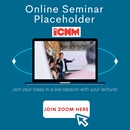Welcome to Topic 11: Strategic People Management, Planning and Fostering Innovation. Organisations hire and work with individuals from different cultures and ethnicities. Organisations need to have a strategic plan in place to manage their stakeholders. During this topic, we will also focus on how to foster innovation among employees to meet organisational goals.
In this topic, you will learn about:
- Strategic human resource management
- Strategy versus trade-off, discipline and focus
- Developing strategy through internal analysis
- Developing strategy through external analysis.
These relate to the Subject Learning Outcomes:
- Assess the key principles and theories underlying strategic people management and explain how their application enhances organisational and individual performance.
- Evaluate the effectiveness of different approaches of leadership and the relationships between effective people management and organisational performance.
- Reflect on the roles and functions that managers perform in the context of the challenges and risks they experience in the changing environment.
Welcome to your pre-seminar learning tasks for this week. Please ensure you complete these prior to attending your scheduled seminar with your lecturer.
Click on each of the following headings to read more about what is required for each of your pre-seminar learning tasks.
Read Chapter 5 pp. 202-204 from University of Minnesota, 2015, Principles of management, University of Minnesota Libraries Publishing edition.
Read the following web articles:
- Gonzalez, G 2016, This Is What the McDonald's of the Future Will Look Like Bottomless French fries, Happy Meal VR headsets, and touch screens galore, Inc
- Hamel, G 2006, The why, what, and how of management innovation, Harvard Business Review.
Read the following book chapters:
- Topic 17 & 18: Bright, DS, Cortes, AH, Hartmann, E, Parboteeah, P, Pierce, JL, Reece, M, Shah, A, Terjesen, S, Weiss, JW, White, MA, Gardner, DG, Lambert, J, Parks-Leduc, L, Leopold, J, Muldoon, J, O'Rourke, JS & OpenStax College 2019, Principles of management, Openstax.
Read and watch the following content.

Strategic human resource management
Mullins (2016) argues that businesses today face five major challenges; globalisation, profitability through growth (especially international markets), technology, intellectual capital, and change.
- A strategy is a comprehensive plan for accomplishing an organisation’s goals
- Strategic HR management, in turn, is a way of approaching business opportunities and challenges - it is a comprehensive and on-going management process aimed at formulating and implementing effective human resource strategies
- Effective strategies are those that promote a better alignment between the organisation and its environment, and the achievement of goals.
Strategy versus trade-off, discipline and focus
Strategising is extremely important to an organisation to ensure the right path to achieving its goals. A strategic management process can be defined as the process by which an organisation manages the formulation and implementation of its strategy (Carpenter & Sanders 2009).
There are two (2) types of strategies an organisation can implement, these include:
- Corporate strategy
- Business strategy.
Let us take a look at each strategy in further detail.
Corporate strategy

Corporate strategy answers strategy questions such as “what type of a business should you select?” and “How does our business X help us compete in business Y, and vice versa?”. The corporate strategy considers an organisation to be a portfolio of businesses, resources, capabilities or activities (Carpenter & Sanders 2008). For example, did you know that the fast-food chain McDonald’s once owned the burrito vendor Chipotle for several years? McDonald’s corporate strategy helped its managers evaluate and determine whether it was appropriate for McDonald’s set of businesses to comprise of different restaurants such as McDonald’s and Chipotle.
Business strategy
Business strategy is about understanding how a given business needs to compete to be effective (Carpenter & Sanders 2008). For example, McDonald’s utilises its business strategy to help retain customers, expand its business by moving into new markets and getting competitor customers to switch their products, and do all this at a profit level demanded by the stock market (Carpenter & Sanders 2008).
Questions to consider
There are a few key questions we must consider when looking at strategising:
- How do we strategise?
- What needs to be done to be able to have a good strategy for the organisation?
What you need is to obtain information and conduct an analysis of the internal characteristics of the organisation and the external market conditions. This analysis is called a SWOT analysis (Andrews 1971).
Let us take a detailed look into the SWOT analysis along with internal and external analysis tools.
SWOT analysis
SWOT analysis stands for strengths, weaknesses, opportunities, and threats.
Strengths and weaknesses
When conducting an organisational analysis, it is important to assess the strengths and weaknesses of the organisation. This is carried out because it is easy to make improvements and changes in an organisation’s internal working rather than trying to control the external environment.
A good starting point for strategising is an assessment of what an organisation does well and what it does less well. In general, good strategies take advantage of strengths and minimise the disadvantages posed by any weaknesses (Andrews 1971). When you can identify certain strengths that set an organisation well apart from actual and potential competitors, that strength is considered a source of competitive advantage.
Opportunities
Opportunities assess the external attractive factors that represent the reason for a business to move forward and prosper and are external to the business. It is important to have a good understanding of what opportunities exist in its market.
Threats

Threats could be identified as factors beyond our control that could place a risk on the organisation (University of Minnesota 2015).
Developing strategy through internal analysis
By looking into internal resources, capabilities and meeting the demanding standards of global competition, organisations create value for customers (McEvily & Chakravarthy 2002; Buckley & Carter 2000). So, how do we measure value? Prahalad & Hamel (1990) identify that value is measured by a product’s performance characteristics and product attributes. Specifically, these are based on customers perception of what they are willing to pay for the product. Factors that provide unique advantages to the firm are considered core competencies (Prahalad & Hamel 1990).
Let us take a detailed look into companies’ core competencies and various internal analysis tools.
Core competencies
Core competencies are resources and capabilities that serve as a source of a firm’s competitive advantage over rivals. Core competencies distinguish an organisation competitively, reflect its personality and make the organisation unique. Core competencies emerge over time as organisations realise their weaknesses and work on turning them into strengths or even learning how to deploy different resources and capabilities.
Internal analysis tools
Internal analysis tools help identify an organisation’s strengths and weaknesses. Such tools are the value chain and VRIO (valuable, rare, inimitable and organisation) tools. The value chain identifies the important constituent areas. These areas take the form of functions, like marketing or manufacturing.
VRIO

VRIO stands for valuable, rare, inimitable, and organisation. Essentially, the VRIO framework suggests that a capability, or a resource, such as a patent or great location, is likely to yield a competitive advantage to an organisation when it can be shown that it is valuable, rare, difficult to imitate and supported by the organisation (University of Minnesota 2015).
Developing strategy through external strategy
When taking a look at the external environment of the organisation, you will start with its general environment. So, what is the general environment? It is comprised of dimensions in the broader society that affects the industry and the firms within it. (Fahey 1999; Walters & Priem 1999). These dimensions are divided into the following six (6) segments:
- P: Political
- E: Economic
- S: Social
- T: Technical or technological
- E: Environmental
- L: Legal.
Let us take a look at the six (6) dimensions (PESTEL) in detail in the following video.
Adapted from Principles of management by University of Minnesota 2015, University of Minnesota Libraries.
An organisation needs to do internal and external analyses to understand better the strengths, weaknesses, threats, and opportunities towards the company and understand how external forces would affect the organisation.
Fostering innovation and creativity
Quinn (2011) argues that managers and leaders have the power and the responsibility to champion and sell/present new ideas through fuelling and fostering innovation. In doing so, managers need to use their power in an ethical and effective manner negotiating agreement and commitment from the employees.
Managers should:
- Build powerful networks and use influence in ethical ways
- Know their audience as well as their own purpose when communicating ideas
- Accept failure as a path to innovation
- Seek to find win-win outcomes
- Consider the concerns of individuals when planning and implementing change.
The forces of change and innovation include:
- Globalisation and increased competition
- Scarcity of resources
- Rapid developments in new technologies and information.
(Mullins 2016)
In order to help survive and find success, organisations must respond to increased demands for quality and high levels of customer needs, as well as greater flexibility in the structure of work organisations and patterns of management. The changing nature and composition of the workforce (diversity) is also a major factor to consider.
The learning organisation
A key factor in organisational effectiveness is the successful management of change and innovation, and corporate renewal. Traditional views of management have placed emphasis on planning, organising, directing and controlling. However, increasing international competitiveness and the need for organisations to respond rapidly to constant change in their environment have drawn attention to the concept of the learning organisation. The essence of the learning organisation is the notion of creating a culture for continuous learning for all employees (Mullins 2016).
Basic features of the learning organisation include:
- Systems thinking - the recognition that things are interconnected and organisations are complex systems
- Personal mastery - the competencies and skills associated with management, including spiritual growth
- Mental models - the drive of fundamental values and principles of the organisation
- Shared vision - the importance of cooperation and a shared vision by all team members
- Team learning - the complimentary practices of dialogue and discussion with employees.
Mullins (2016) argues that organisations that are ‘learning’ are essentially liberating and energising to work in which is crucial for organisational survival and growth. Learning organisations encourage employees at all levels of the organisation to learn regularly and rigorously from their work, as well as communicating to employees that it values their learning. In becoming ‘learning organisations’, workplaces are able to transform and innovate themselves continuously.
It is, however, important to remember that learning starts with the individual and the impact that personality, ability and culture (as discussed in previous topics) may have on this process (Mullins 2016).
Knowledge check
Complete the following two (2) tasks. Click the arrows to navigate between the tasks.
Key takeouts
Congratulations, we made it to the end of the eleventh topic! Some key take outs from Topic 11:
- Strategy formulation, a part of planning, is important because it helps ensure the organisation can progress from vision to mission to goals and objectives.
- Strategic focus is a common element in the strategies across successful firms.
- The internal analysis starts with identifying resources and capabilities, which can be tangible or intangible.
Welcome to your seminar for this topic. Your lecturer will start a video stream during your scheduled class time. You can access your scheduled class by clicking on ‘Live Sessions’ found within your navigation bar and locating the relevant day/class or by clicking on the following link and then clicking 'Join' to enter the class.
Click here to access your seminar.
The learning tasks are listed below. These will be completed during the seminar with your lecturer. Should you be unable to attend, you will be able to watch the recording, which can be found via the following link or by navigating to the class through ‘Live Sessions’ via your navigation bar.
Click here to access the recording. (Please note: this will be available shortly after the live session has ended.)

In-seminar learning tasks
The in-seminar learning tasks identified below will be completed during the scheduled seminar. Your lecturer will guide you through these tasks. Click on each of the following headings to read more about the requirements for each of your in-seminar learning tasks.
Work in a breakout room assigned by your lecturer during the scheduled seminar. Discuss the following topic with your peers. Your lecturer will request that you present the findings back to the class during the scheduled seminar.
Discussion topic: Discuss SWOT analysis in the context of a home-grown organisation.
In the same breakout room as previously, discuss the following topic with your peers. You will be required to write your thoughts in a shared Word document and present the findings back to the class during the scheduled seminar.
Discussion topic: Discuss why diversification is important to an organisation.
Welcome to your post-seminar learning tasks for this week. Please ensure you complete these after attending your scheduled seminar with your lecturer. Your lecturer will advise you if any of these are to be completed during your consultation session.
Go to Topic 11: Forum Activity 1 to review the questions and post your answers. You can also navigate to the forums by clicking on 'MGT100 Subject Forum' in the navigation bar for this subject.
You should now be ready to present your assessment. Ensure you have practiced and timed yourself. Reach out to your lecturer if you have any more questions.
Each week you will have a consultation session, which will be facilitated by your lecturer. You can join in and work with your peers on activities relating to this subject. These session times and activities will be communicated to you by your lecturer each week. Your lecturer will start a video stream during your scheduled class time. You can access your scheduled class by clicking on ‘Live Sessions’ found within your navigation bar and locating the relevant day/class or by clicking on the following link and then clicking 'Join' to enter the class.
Click here to access your consultation session.
Should you be unable to attend, you will be able to watch the recording, which can be found via the following link or by navigating to the class through ‘Live Sessions’ via your navigation bar.
Click here to access the recording. (Please note: this will be available shortly after the live session has ended.)

- HRD Connect 2018, How can HR foster innovation in your organisation?, HRD Connect
- Tyler, K 2019, 10 steps to unlocking innovation at your organisation, SHRM.
References
- Andrews, KR 1971, The concept of corporate strategy, Homewood, Irwin
- Buckley, PJ & Carter, MJ 2000, 'Knowledge management in global technology markets: Applying theory to practice',. Long Range Planning, 33(1): 55–71.
- Carpenter, MA & Sanders, WG 2009, Strategic management, Pearson/Prentice-Hall.
- Carpenter, MA & Sanders, WG 2008, Fast food chic? The Chipotle burrito, University of Wisconsin Business Case.
- Fahey, L 1999, Competitors. Wiley
- Harvard Business School n.d., Marketing strategic trade-offs, https://www.isc.hbs.edu/strategy/creating-a-successful-strategy/Pages/making-strategic-trade-offs.aspx
- McEvily, SK & Chakravarthy, B 2002, ‘The persistence of knowledge-based advantage: An empirical test for product performance and technological knowledge’, Strategic Management Journal, 23(4):285-305
- Mullins, L 2016, Management and organisational behaviour, 11th edn., Pearson.
- Prahalad, CK & Hamel, G 1990, The core competence of the corporation, Harvard Business Review, 79–93.
- Quinn, RE et al. 2011, Becoming a master manager: A competing values approach, 5th edn., Wiley.
- University of Minnesota, 2015, Principles of management, University of Minnesota Libraries Publishing Edition, http://open.lib.umn.edu/principlesmanagement/
- Walters, BA & Priem, RL 1999, 'Business strategy and CEO intelligence acquisition', Competitive Intelligence Review, 10(2): 15–22.

